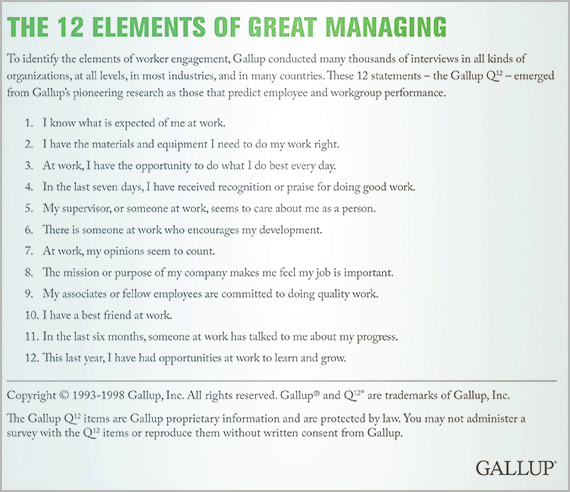As the global economic recovery continues to be debated, disputed, and devoutly wished for in countries around the world, a curious phenomenon seems to be emerging in parts of the Indian economy. Employee engagement has been stagnant or declining in some organizations that have either handled the economic crisis well or that simply continue to enjoy business success.
Many Indian leaders still believe that monetary incentives are sufficiently motivating.
Of the Indian finance and manufacturing companies that measure employee engagement using Gallup's Q12 metric, several have done relatively well in maintaining robust business performance. And employees have kept their jobs and seen very few layoffs; in some cases, they've received modest salary increments and bonuses. From a rational perspective, these employees ought to be pleased -- indeed, gratified and relieved -- and in a better frame of mind to commit more deeply to the employer.
But the reality in these organizations seems to be almost the opposite. Gallup's research into their employee engagement trends indicates that their employees feel no more connected with their work environments than they did in the years before the downturn. Naturally, senior management is concerned and perplexed. Why hasn't their organization's relative success created a happier, more engaged workforce? What are they overlooking?
Looking to behavioral economics
The leaders of those organizations would do well to seek their answers in behavioral economics. Unlike traditional neoclassical economics, which posits that people are essentially rational in the way they make decisions, behavioral economics recognizes that people also are influenced by emotional and psychological factors in their decision making.
Those emotional drivers are very important, as they influence the bond between workers and their workplace. That bond has a powerful effect on performance, which is why ensuring that it's strong and positive is so valuable to these organizations' leaders. Gallup's analysis reveals that employee engagement results when organizations meet 12 key employee emotional needs. (See graphic "The 12 Elements of Great Managing.")

And those drivers also are precisely the components that can correct the low employee engagement scores that concern leaders. Helping senior leadership teams understand employee engagement and its linkage to positive business results is a good first step toward a solution, and many leadership teams have given wholehearted buy-in to taking steps to improve it. These leaders recognize that achieving strong, sustainable business results depends on keeping employees engaged and productive.
Engagement isn't a one-off program that managers can install, then walk away and ignore, however. Here are a few examples of problems that can develop in the workplace, how they affect employee engagement, and what leading companies are doing to combat them.
Assuming money alone drives employee engagement
Many Indian leaders still believe that monetary incentives are sufficiently motivating, at least for junior employees. According to their reasoning, employees are mostly concerned with meeting "basic" needs, such as paying mortgages, their healthcare bills, and the like. These managers give lip service to employees' emotional health and well-being in discussions or assume that this is the responsibility of other departments, such as human resources or employee relations.
This is a mistake. Managers in organizations that are achieving financial success may be focused on driving business outcomes by pushing for numbers while neglecting other key factors that will keep employee engagement strong. As a result, employees may feel that their treatment is no better than what their counterparts in other, less successful organizations are receiving. This feeling can reduce their faith in their own impact on business results, which in turn may lower their incentive to keep performing at peak levels.
Inevitably, the issue of rewards comes up when otherwise successful organizations are focused almost exclusively on monetary rewards and incentives while neglecting employees' emotional needs. This has led managers to fight for higher payrolls. Yet even when they have secured money and resources, these managers find that employees still aren't engaged.
The need to retain talented employees adds to managerial anxiety, especially as the economy improves.
One way to counteract this problem is to recognize that meeting employees' emotional needs is key to keeping them engaged and their performance high. In one bank that Gallup studied, many employees who were consistently high performers indicated that money was not the primary motivator in determining whether they would stay with their company; in fact, if pay had been the driver, they would have left the organization years ago. They stayed for other, more emotionally driven reasons: They worked with people they could trust, they were well-respected for their work, and they were learning a lot in their roles.
Failing to understand employees' emotional needs
Research in behavioral economics shows the inherent limitations and biases that affect human decision making. In a corporate context, these inconsistencies manifest in several ways. The "representativeness trap" occurs when people's opinions are based on stereotypes or when customers' or vendors' opinions, for example, are biased by a few widely publicized reports of product failures. Another type of faulty reasoning, "hindsight bias," occurs when leaders or managers make decisions based on how well employees have performed in the past rather than evaluating how well they could support the organization's mission in the future. Many other such traps of human behavior affect the workplace continuously and often unnoticeably. (See "How to Fight Bureaucracy" in the "See Also" area of this page.)
Many of the managers Gallup studied in India still seem to be applying a one-size-fits-all model when confronting people issues, even when dealing with the inconsistencies of human nature. To combat this problem, companies must become strongly invested in assessing engagement in their organizations down to the workgroup level, then take steps to ensure that corrective actions don't falter or lose traction as they go down the line.
How do successful organizations do this? They enable managers to better understand their own talents as well as those of their team members. They also create positive and open dialogue within the team and use the engagement data to drive workplace motivation. In a 10,000-employee insurance company that Gallup worked with, for example, managers received issue-specific training for dealing with problem escalation. This training helped them deal with issues that previously had seemed beyond their control, which in turn had created bottlenecks in the system that generated cynicism and corroded the problem-solving process.
Managers also needed to know who was good at what, who was bad at what, and how engagement affected everyone's work. They needed a strong feedback loop because their role was a key element in building and sustaining momentum. Managers led structured dialogue on problems with their teams. Then senior leaders from every function became deeply involved in realigning processes based on the difficulties that the managers' dialogues uncovered. This process not only caught little problems before they became unmanageable, but it also uncovered areas where employees' emotional needs were not being met so managers could take corrective action.
Taking a reactive approach to managing and retaining employees
Even during times of high unemployment, organizations have crucial jobs to fill and key employees to retain. The need to retain talented employees adds to managerial anxiety, especially as the economy improves and more jobs become available. In India, as noted before, there are companies that have achieved excellent business results in spite of the downturn. Employees justifiably lay claim to helping their companies survive or even thrive, yet management doesn't seem to consider them essential to their organization's results.
How can organizations correct this? In this case, the focus should be on identifying larger, more endemic issues that are becoming barriers to engaging employees or customers. In a leading international bank, this was achieved by studying employee emotions and biases about key initiatives that were affecting the workforce. The bank undertook a detailed investigation to identify the reasons for dissonance and to understand employees' deep-seated concerns. This subsequent analysis paved the way for meaningful interventions by leadership and human resources and improved buy-in from employees for the ongoing initiatives.
This approach can work for any organization wondering why business results are high but employee engagement is flagging. It alerts management to employees' real needs and leads everyone in the organization to a more profound understanding of engagement, performance, and how they influence one another.
